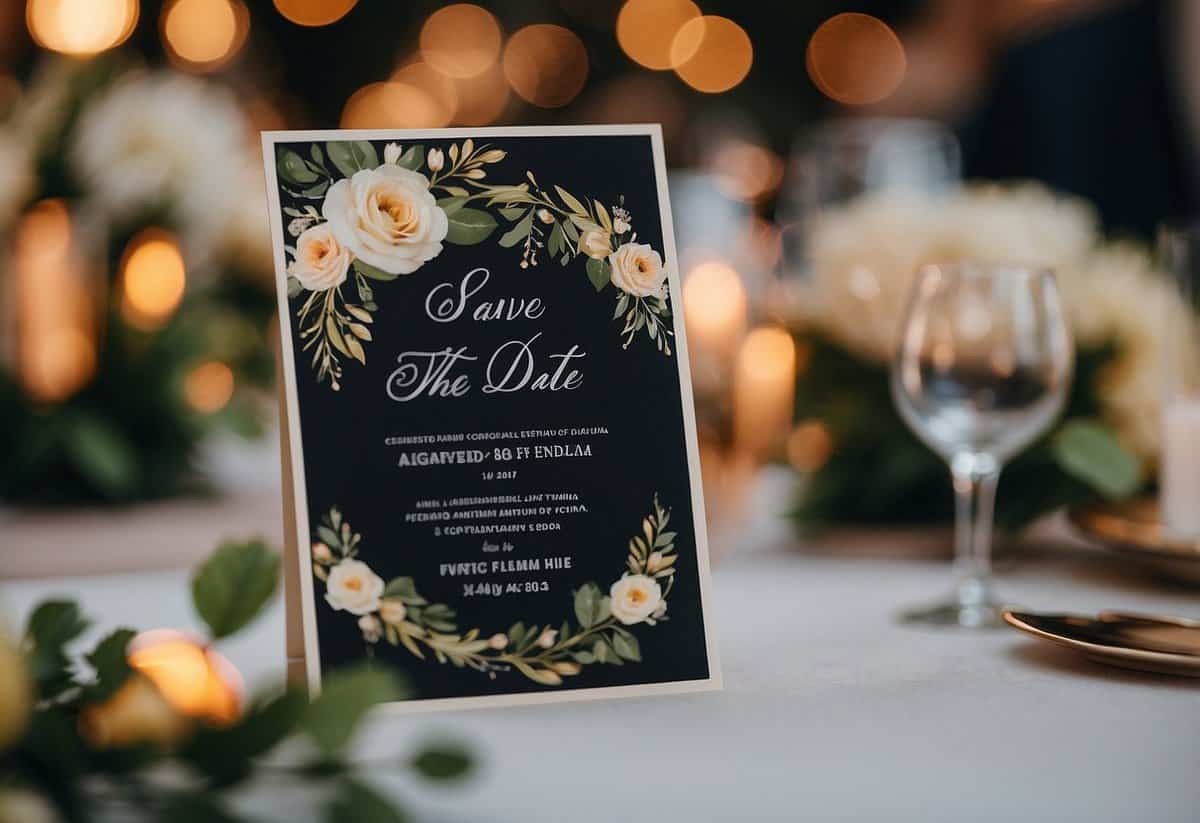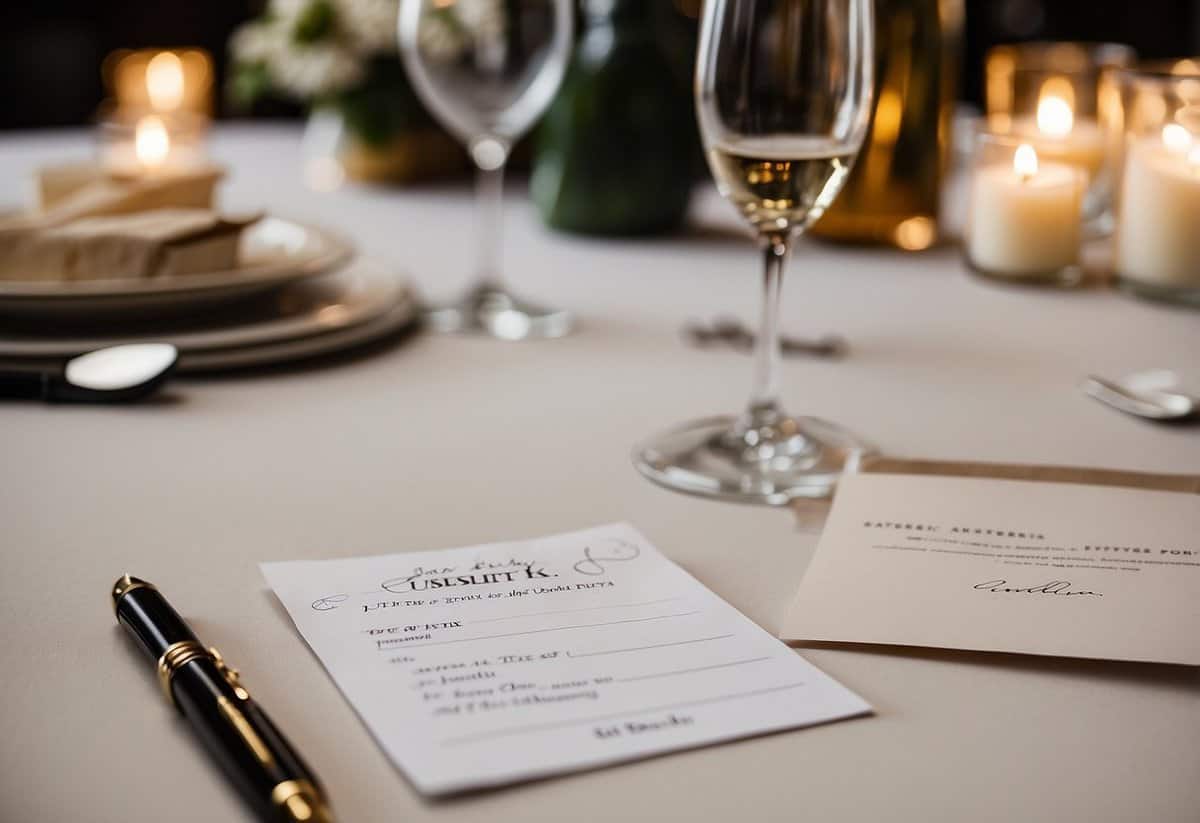Does Everyone Invited to a Wedding Get a Save the Date? Understanding the Etiquette
Planning a wedding involves many steps, and one common question is whether everyone invited gets a save-the-date. The answer is simple: only those you plan to invite to the wedding should receive a save-the-date. This helps guests mark their calendars and make travel arrangements if needed. It’s an important part of save-the-date etiquette.

As you prepare your guest list, remember that sending a save-the-date isn’t just for far-flung relatives or friends. Close family members and your wedding party should also receive one, even if they already know the wedding date. This simple step ensures everyone feels included and can plan accordingly for your big day.
Careful planning can help you avoid the headache of adjusting your guest list after sending out save-the-dates. Once they’re in the mail, it’s nearly impossible to retract them. Make sure your guest list is finalized before hitting send to keep everything running smoothly. For more tips on managing this aspect of your wedding, check out this guide.
Understanding Save-the-Date Basics

Save-the-dates are an important part of wedding planning. They help notify your guests of your wedding date well in advance. Knowing the ins and outs of these announcements is crucial for proper wedding etiquette.
The Purpose of Save-the-Dates
Save-the-dates serve as an early heads-up for your guests. They give them a chance to mark their calendars and plan accordingly. Unlike formal invitations, save-the-dates don’t require a response.
These cards typically include the wedding date and location. This gives your guests enough information to start making travel arrangements if necessary. Sending out save-the-dates around six months before the wedding is generally recommended. For destination weddings, consider sending them even earlier to allow extra planning time.
Key Differences Between Save-the-Dates and Formal Invitations
Save-the-dates are sent first and include only the basic details: the date, location, and a note that a formal invitation will follow. Formal invitations, on the other hand, include detailed information such as the itinerary, dress code, and RSVP instructions.
Formal invitations are sent closer to the wedding date, usually around two months before. The main role of the formal invitation is to gather RSVPs and provide every last detail your guests need. Unlike save-the-dates, formal invitations should be sent to everyone on your guest list, ensuring no one misses out.
Deciding Who Gets a Save-the-Date

Deciding who gets a save-the-date involves more than simply looking at your guest list. Consider households, key wedding participants, and special connections.
Creating Your Guest List
When starting your save-the-date list, begin with your guest list. This includes immediate family members, close friends, and other important guests. Think about those who need ample notice to make travel arrangements or request time off work.
It’s helpful to use a spreadsheet to organize your list. This way, you can easily track names, addresses, and whether they received a save-the-date. Remember, anyone who gets a save-the-date should also receive an official invitation later.
Etiquette for Sending to Households
When sending save-the-dates to households, you don’t need to send one to every individual. One card per household is usually sufficient. For example, a single save-the-date can be sent to a married couple or a family living together.
If you have guests living in shared accommodations, such as roommates, consider whether each person should receive their own save-the-date. This can depend on your personal relationship with each person.
Special Considerations for Key Wedding Participants
Key wedding participants like your wedding party, parents, and close relatives should definitely receive save-the-dates. These individuals play significant roles in your wedding and should be informed as early as possible.
Additionally, consider sending save-the-dates to out-of-town guests first. This allows them to make travel plans well in advance. Make sure to include anyone who needs extra time for planning, such as older relatives or friends with busy schedules.
Timing and Delivery Methods of Save-the-Dates

Save-the-dates help your guests plan for your special day. Getting the timing right and choosing the best delivery method can make things smoother for everyone involved.
Ideal Timeline for Sending
Timing is key for save-the-dates. Aim to send them six to eight months before your wedding day. If you’re having a destination wedding, consider sending them even earlier, around eight months to a year in advance. This gives your guests ample time to arrange travel and accommodations. For weddings on holiday weekends, early notice is particularly helpful as travel can be more complicated.
Choosing Between Electronic and Postal Save-the-Dates
You have two main options for sending save-the-dates: electronic or postal. Email save-the-dates are quick and can be more budget-friendly, especially if you have a large guest list. They also allow for creative designs and immediate updates.
Postal save-the-dates, on the other hand, offer a more traditional touch. They can include magnets or physical cards that guests can put on their fridge or bulletin board. Physical save-the-dates are often seen as more personal and can be a keepsake for your guests.
Cost-Effective and Budget-Friendly Options
If you’re looking to save money, there are several budget-friendly choices for save-the-dates. Opting for electronic save-the-dates can be significantly cheaper than mailing physical cards. If you prefer postal cards, consider simpler designs without extra features like magnets. You can also purchase printable templates online and print them yourself to save on costs.
Another cost-saving tip is to order save-the-dates in bulk, as larger orders often come with a discount. Keep in mind that even with budget-friendly options, it’s still possible to create memorable and stylish save-the-dates that your guests will appreciate.
Designing Your Save-the-Date

Designing your save-the-date involves making sure it matches your theme, carefully choosing the wording, and possibly working with stationers and wedding websites for a polished look.
Incorporating Your Wedding Theme and Style
The design of your save-the-date should align with your wedding theme and style. Are you planning a rustic, beach, or formal wedding? Use colors, fonts, and images that reflect this.
Hand-written calligraphy adds a classic touch. If you prefer something modern, bold fonts and vibrant colors can make a statement. Consider using engagement photos to personalize it.
Using high-quality paper or even magnets can make it memorable.
Choosing the Right Words and Details
It’s important to keep the wording clear and concise. Essential details include your names, wedding date, and location. A simple phrase like “Save the Date” followed by the information works well.
Add a note that a formal invitation will follow. For destination weddings, include basic travel info. Make sure the text is easy to read and matches your wedding theme’s tone.
Working with a professional can help ensure the text is perfect.
Working with Stationers and Wedding Websites
To achieve a polished look, consider working with stationers. Companies like Minted offer custom designs and can help you choose the right paper, ink, and more. They can provide samples and proofs to ensure you’re happy with the design.
Leveraging wedding websites is also useful. You can include a link to your website on the save-the-date for guests to find accommodation, schedules, and updates easily.
Wedding websites often offer templates that match your stationery design, maintaining a cohesive look.


